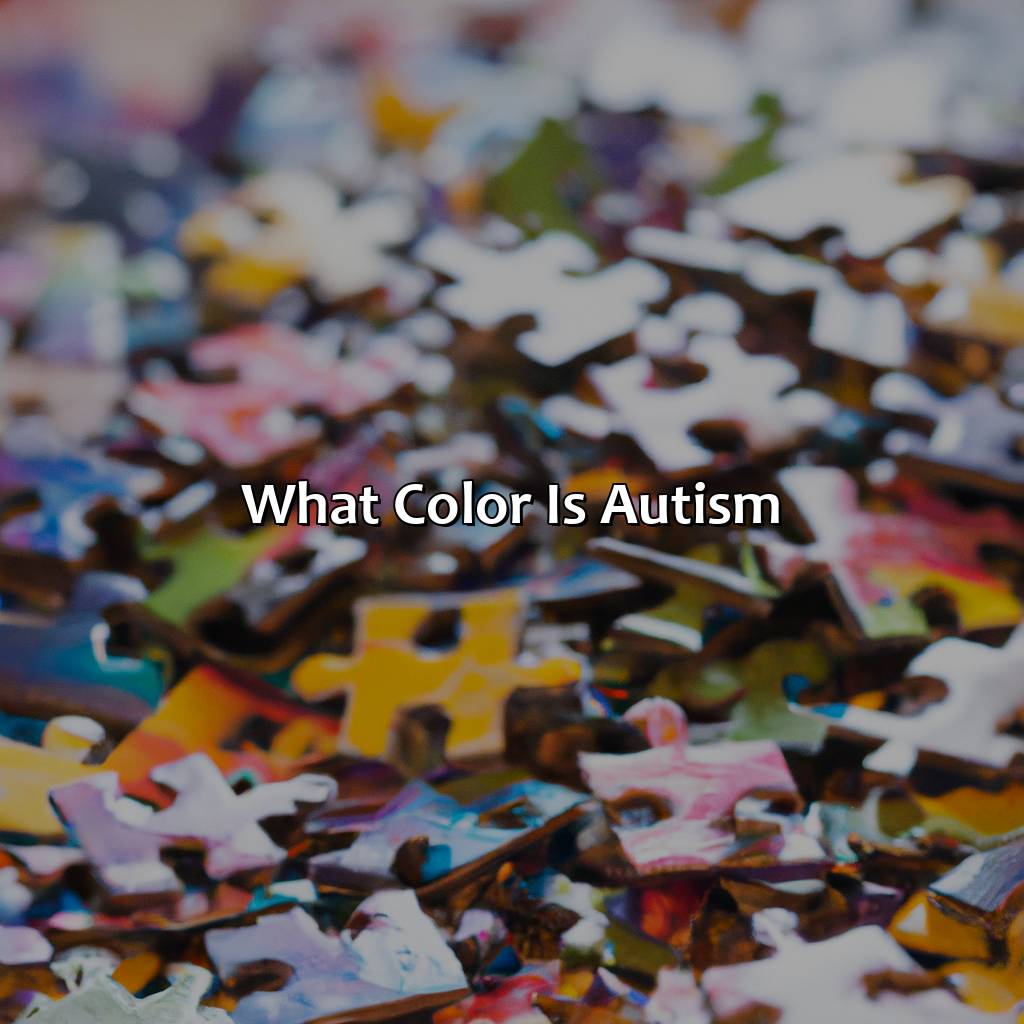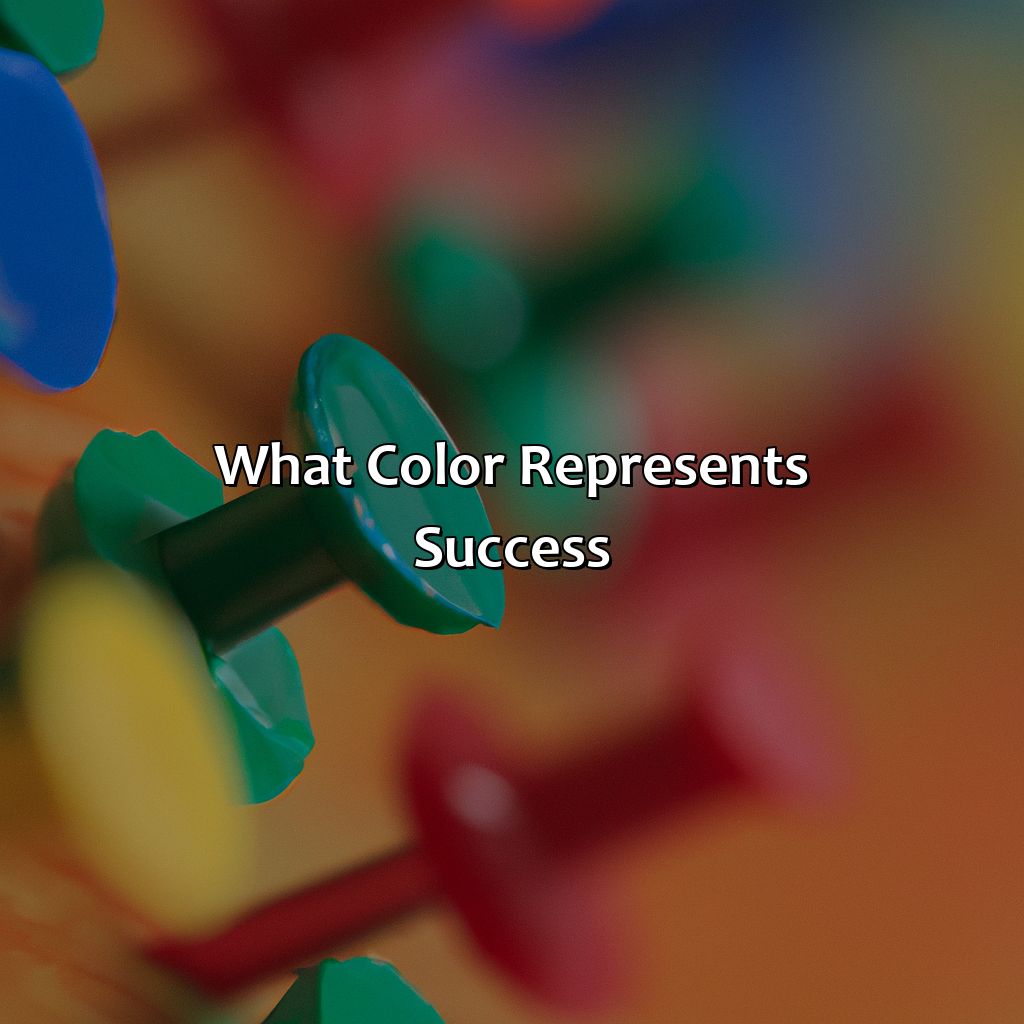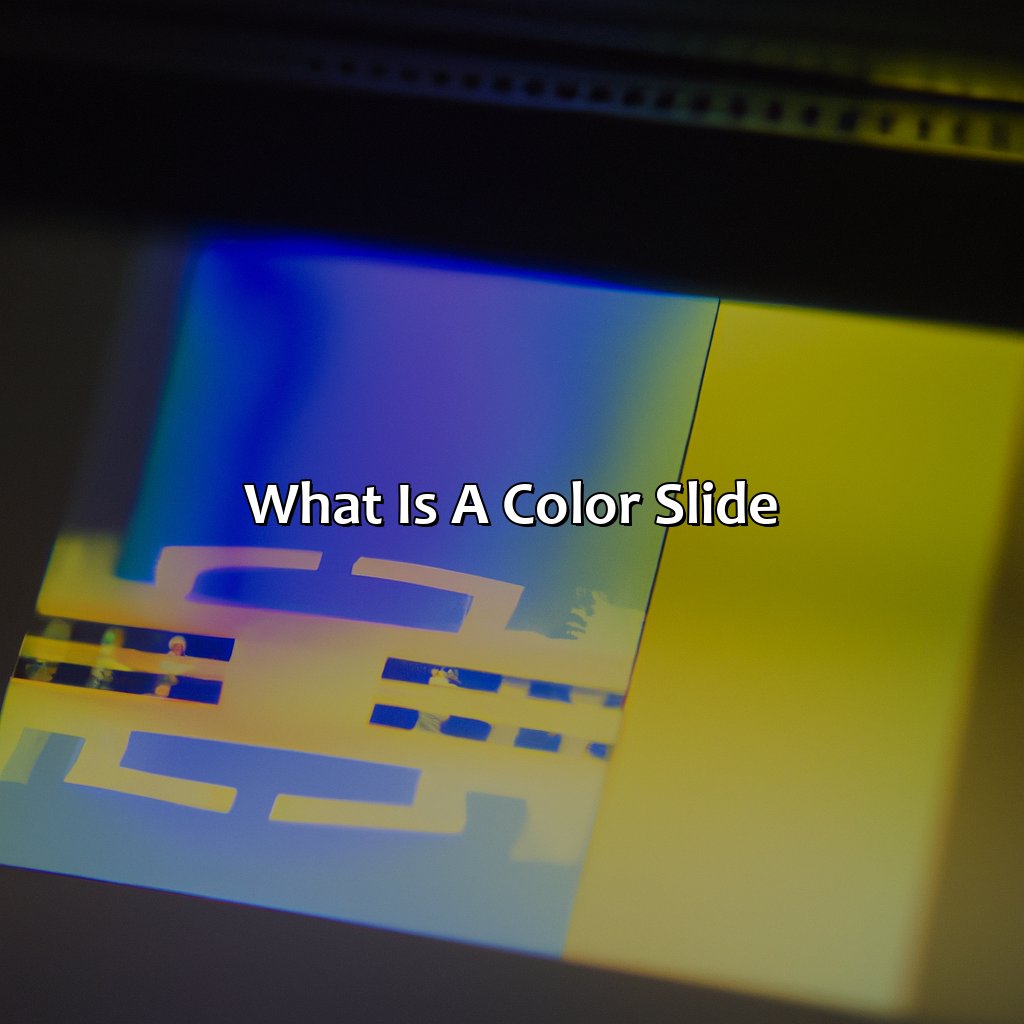Key Takeaway:
- Autism is a developmental disability that affects cognitive and sensory processing, leading to differences in color perception for individuals with autism.
- Sensory and cognitive processing differences, as well as genetic factors, can contribute to differences in color perception for individuals with autism.
- Understanding color perception in individuals with autism is important for designing environments that meet their unique needs and addressing common myths and misconceptions.
What is autism?

Photo Credits: colorscombo.com by Jose Campbell
To get a better understanding of autism spectrum disorder, you must first define what autism is. Then, get familiar with the characteristics of people with autism, such as social and communication issues. Finally, learn more about the various types of autism spectrum disorder to comprehend the differences within the diagnosis.
Definition of autism
Autism is a neurodevelopmental disorder that affects communication, social interaction and behavior. It is often diagnosed in early childhood and can range from mild to severe. The diagnostic criteria recognizes two categories: deficits in social communication and interaction, and restricted, repetitive patterns of behaviors, interests or activities.
Individuals with autism have unique characteristics that vary from person to person. They may struggle with social cues, have difficulty initiating and sustaining conversations, exhibit repetitive or ritualistic behaviors, experience sensory processing differences such as sensitivity to loud noises or certain textures.
Various types of autism spectrum disorders include classic autism (also known as Kanner’s autism), Asperger’s syndrome, pervasive developmental disorder not otherwise specified (PDD-NOS), and childhood disintegrative disorder.
It is believed that factors such as sensory processing differences, cognitive processing differences and genetic factors could influence color perception in individuals with autism. Some researchers suggest that individuals with autism may process color information differently than neurotypicals, leading to different visual experiences.
Studies have shown that individuals with autism may exhibit unique preferences for colors but results are inconsistent across studies. Some studies suggest that certain colors could elicit stronger emotional responses. Colors can also be used strategically when designing environments for people with ASDs since the wrong hue or pattern could trigger intense reactions.
Misconceptions about the relationship between color perception in individuals with autism are common. One myth suggests that all individuals with ASDs are drawn towards blue while some believe they only focus on muted tones; however this simply isn’t true as findings differ widely from one study to another.
A true fact supporting this statement comes from research by researcher Unrine LT which states “Some persons studying the effects of color on people affected by Autism Spectrum Disorder caution against attributing uniform aesthetic preferences to those on the autistic spectrum.”
Autism is not a color, but it sure does add some interesting shades to a person’s personality.
Characteristics of individuals with autism
Individuals with autism exhibit unique characteristics related to their social interactions, communication skills, and behavior patterns. These traits are often displayed differently from person to person, making each individual on the spectrum unique in their own way. Autism characteristics can manifest in a range of ways including sensory processing difficulties, repetitive behaviors and routines, difficulty with social cues or emotional regulation, speech and language delays or impairments, and more.
Autism is a neurodevelopmental disorder that impacts individuals throughout their entire life. As such, the characteristics of individuals with autism can change and evolve over time as they develop new coping strategies or receive therapies that help them better navigate various aspects of life.
While individuals with autism may struggle in areas such as verbal communications and reading social cues from others, they often also have strengths in different areas such as visual-spatial reasoning and attention to detail. Overall, it is important to recognize and appreciate the unique characteristics of individuals with autism when designing environments or interacting with them in daily life.
In order to better support individuals with autism, it is vital to understand their characteristics and how they may differ from those without the condition. By providing accommodations that address sensory needs or create an environment conducive to learning for individuals with autism, we can ensure all members of our community feel valued and supported.
Why settle for just one type of autism when you can have a whole spectrum of it?
Types of autism spectrum disorder
Autism is a neurodevelopmental disorder that affects individuals’ ability to communicate and socialize effectively. It is essential to understand the types of autism spectrum disorders (ASD) to tailor effective intervention strategies.
To elaborate, there are distinct types of ASD grouped under the umbrella term ASD, including Asperger syndrome, pervasive developmental disorder not otherwise specified (PDD-NOS), and childhood disintegrative disorder (CDD). These conditions share common features such as difficulty in communication, social interaction, restricted interests and repetitive behaviors. However, individuals with Asperger’s have average or above-average intelligence quotient (IQ), while those with PDD-NOS or CDD may have delayed language development or intellectual disability.
Professionally presenting this information in a concise way can be achieved through creating an organized table. Here is an example:
| Types of Autism Spectrum Disorders | |
|---|---|
| Asperger Syndrome | Average or above-average IQ |
| Pervasive Developmental Disorder Not Otherwise Specified (PDD-NOS) | Delayed language development/intellectual disability |
| Childhood Disintegrative Disorder (CDD) | Conspicuous loss of previously acquired skills |
It’s worth mentioning that the categorization of different types of ASD is still evolving as more research and data become available.
Pro Tip: By familiarizing oneself with the various spectrums of autism disorders available, you would be better equiped to create individualized portfolios for people living with autism thereby helping them lead better lives.
Autism isn’t just black and white – sensory and cognitive processing differences, as well as genetic factors, all play a role in color perception.
Factors that influence autism color perception
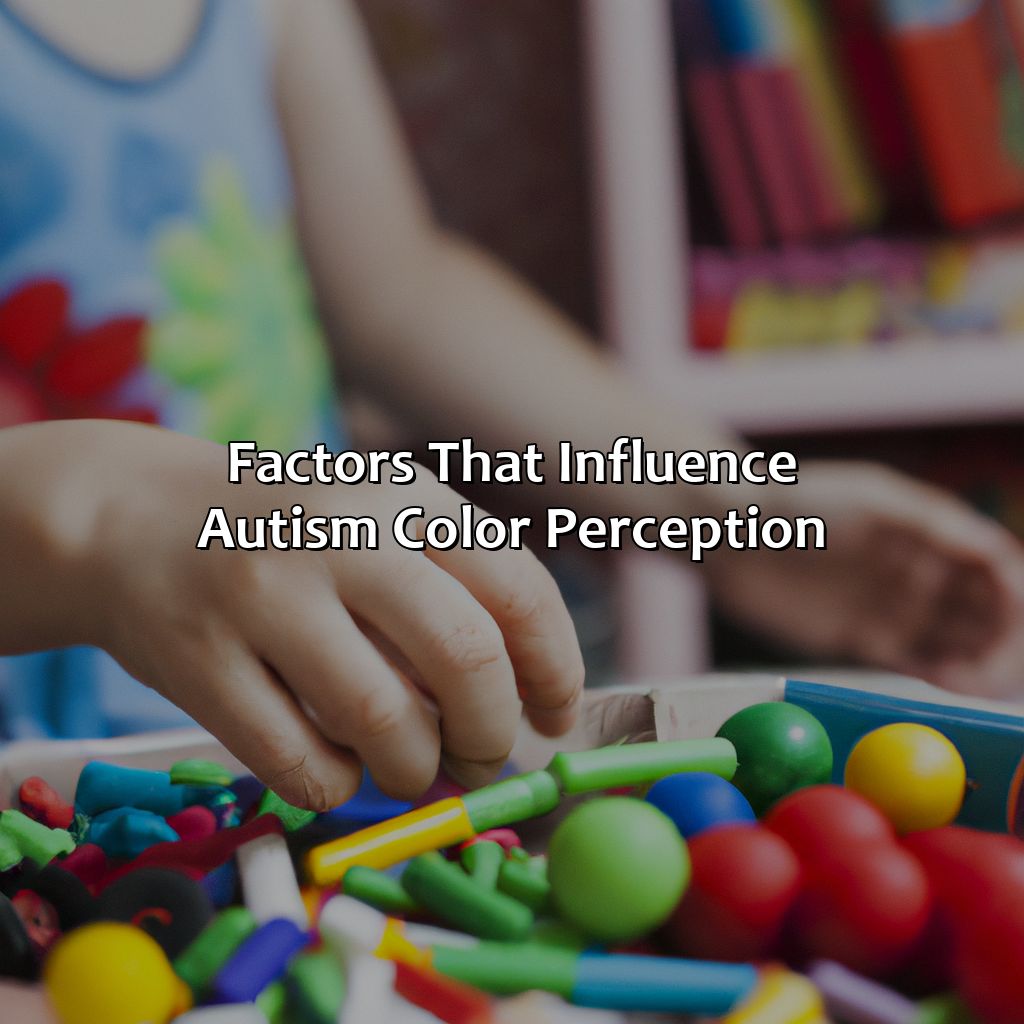
Photo Credits: colorscombo.com by Henry Smith
To get to the bottom of autism color perception, it is necessary to explore sensory processing, cognitive processing, and genetics. Autistic people and neurotypicals process sensation differently, which has an impact on color perception. Cognitive processing variations also come into play, which affects the way color perception is processed. In addition, genetics also influences an autistic person’s color perception.
Sensory processing differences
Individuals with autism may experience significant sensory processing differences, influencing how they perceive and interact with their environment. These differences can include heightened or reduced sensitivity to sensory input, such as touch, sound, smell, taste and vision. Additionally, the processing of that sensory information by the brain can differ from typical development, resulting in difficulties interpreting and responding to stimuli. This has implications for behavior and communication skills. Understanding these sensory processing differences is crucial in designing effective interventions to support individuals with autism.
In the context of autism, ‘sensory processing differences’ are patterns in how someone perceives or responds to sensory input compared to typically developing individuals. Sensory-processing may be altered through various experiences that create a range of sensitivities or aversions in different senses(multi-modal disorder). For instance, some individuals with autism develop hypersensitivity to certain sounds like flushing water while others may not respond appropriately if called out loudly due to reduced hearing sensitivity; thus impacting communication capabilities.
It’s essential to consider individual needs when designing spaces and support strategies for people with Autism Spectrum Disorder (ASD) since alterations to the physical space they occupy can lead to improvements in well-being. Interventions centered on colour changes or hues can be tricky because an individual’s response might depend on their level of preference towards those colours and if their past experiences have conditioned them towards specific associations within colour cues.
Pro Tip: Introduce accommodations tailored according to each autistic individual’s unique sensory adaptation preferences avoiding overwhelming them which might lead to decreasing of initiation related traits leading to mental breakdowns in some curious cases.
Autistic individuals process information differently, leading to unique cognitive strengths and challenges.
Cognitive processing differences
Individuals with autism spectrum disorder may exhibit cognitive processing differences in areas such as attention, memory, and information processing. This can affect their ability to recognize and interpret social cues, which may contribute to difficulties in social interactions. Research suggests that these processing differences may be related to alterations in brain development and connectivity.
Studies have shown that individuals with autism often have enhanced perceptual abilities for certain tasks, such as visual search tasks. Furthermore, they tend to show reduced sensitivity to contextual information and a preference for detail-oriented processing. These cognitive differences can influence how individuals with autism perceive and interpret the world around them.
Some possible implications of these cognitive processing differences include increased susceptibility to sensory overload, difficulties with abstract concepts and language acquisition, and challenges with flexibility and adaptability. Understanding these unique features of cognitive processing in individuals with autism can inform interventions and support strategies.
It is important for parents, educators, and caregivers to be aware of these cognitive processing differences and incorporate strategies that address them appropriately. This may include providing clear instructions that are broken down into smaller steps, reducing environmental distractions to minimize sensory overload, offering opportunities for hands-on learning experiences that promote concrete understanding of abstract concepts, and tailoring communication styles to suit the individual’s needs.
Not being aware of the cognitive processing differences in individuals with autism can result in unrealistic expectations or misguided interventions that do not address their unique strengths and challenges. Therefore awareness is crucial for providing appropriate support for individuals on the autism spectrum.
Genetic factors play a role in autism, but sorry folks, there’s no gene for rainbow mode.
Genetic factors
The genetics behind autism play a significant role in its development, influenced by various factors. The heritability of autism is estimated to be around 70-90%, indicating that genetic differences account for most of the risk. DNA sequencing studies have identified several genes associated with autism, including mutations and variations that affect brain development and function. Additionally, environmental factors can interact with genetic predisposition to increase the risk of developing autism. Further research is necessary to understand the complex interplay between genetics and other factors that contribute to autism spectrum disorder.
Autism doesn’t just paint a different picture – it can also change the colors you see it in.
Color perception in individuals with autism
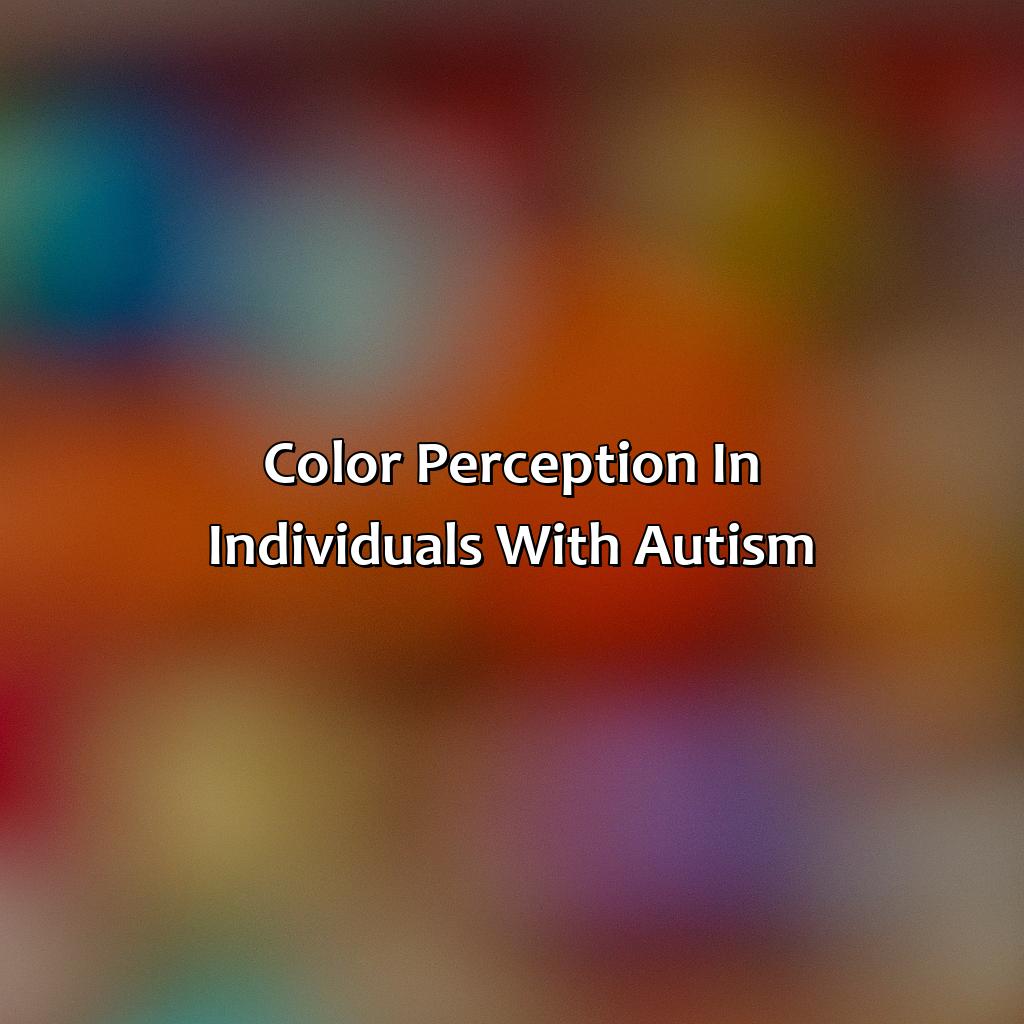
Photo Credits: colorscombo.com by Dennis Baker
Gain insight into color perception among those with autism. Check out research findings on color preference & perception, how color impacts emotional & behavioral response, and strategies for creating environments based on color perception. Uncover how color affects individuals with autism and how the right environment can support their needs. Dive into sub-sections on research findings, impact of color, and strategies for environment design.
Research findings on color preference and perception
Studies show that individuals with autism often have unique color preferences and perception compared to neurotypical individuals. Some research findings indicate that children with autism tend to prefer muted or desaturated colors, while others suggest that they may be more drawn to bright and intense hues. Additionally, many individuals with autism perceive colors differently from neurotypical individuals, with some studies showing differences in hue discrimination or color constancy.
Further research has also suggested that there may be a link between color perception and emotional and behavioral response in individuals with autism. For example, some individuals with autism may experience heightened anxiety or sensory overload in certain environments based on the colors used, while others may find certain hues calming and soothing.
Based on these research findings, it is important to consider color preferences and perception when designing environments for individuals with autism. One suggestion is to use a limited color palette of softer or muted colors that are less likely to be overwhelming or jarring. Providing options for adjustable lighting can also help accommodate different sensitivities to brightness and color contrast.
Understanding the unique color preferences and perception of individuals with autism can help create more inclusive environments and positively impact their emotional well-being and behavior. Ongoing research in this area can further deepen our understanding of how colors are perceived by autistic individuals and how we can design spaces that cater to their needs.
Color isn’t just a visual experience; it can also evoke strong emotional and behavioral responses in individuals with autism.
Impact of color on emotional and behavioral response
The influence of colors on an individual’s emotional and behavioral response has been a topic of significant interest. Colors play an essential role in how people interact with their environment, affecting mood, perception, and behavior. Research studies show that colors have a particular impact on emotional and cognitive states, determining an individual’s behavior towards different situations.
The color palette: red, blue, green, yellow, black, white captures valuable information about how these colors affect individuals with autism based on their ability to perceive them.
The visual perception of colors impacts the emotional and behavioral response among individuals with autism significantly. Color choices can either increase or decrease arousal levels among autistic people due to differences in sensory sensitivity to these colors. Hues like red can stimulate anxiety or aggression in some people with autism while calming effects occur with blue or green hues for others. Studies reveal that there is no conclusive evidence suggesting that certain types of colors are universally preferred by individuals with autism; preference varies on an individual basis.
Unique details regarding color perception include the ability for an autistic person’s preference towards certain hues to change depending on situational circumstances such as lighting and room layout. Also worth mentioning is the difference in perceptual experience between individuals’ moment-by-moment sensory processing influences color cognition.
In history, researchers found that specific patterns emerged concerning preferences for particular hues based on emotions experienced by people with autism; however, there was no consensus regarding what those preferences might be – even today. Understanding the impact of color perception in autistic individuals can help create environments better suited for them catered to their specific needs while also dispelling harmful myths regarding color preference among them.
Designing sensory-friendly environments for individuals with autism requires thoughtful consideration of color choices and their impact on emotional and behavioral responses.
Strategies for designing environments for individuals with autism based on color perception
Understanding color perception in individuals with autism is crucial for designing appropriate environments. Here are some recommended strategies for environment design based on color perception.
| Strategy | Description |
| Color Palette | Limit the number of colors used in a room and choose hues that are less visually stimulating to avoid overwhelming individuals with autism. |
| Contrast | Use high contrast between walls, floors, and furniture to make it easier for individuals with autism to distinguish between various objects and items in different spaces. |
| Lighting | Avoid harsh overhead lighting and instead use natural light or soft ambient lighting. Use dimmers to adjust the light levels according to their preference. |
| Sensory-focused design | Consider texture, sound, and smell while selecting the colors as they can also contribute towards sensory overload and impact behavior further than just visual stimulation. |
Additionally, color is linked to emotional and behavioral responses. Understanding these connections is crucial while designing environments for individuals with autism.
For instance, warm colors like reds and yellows may increase anxiety while cooler tones such as blues and greens conduce calmness. For sensitive perceptions of smells or taste of Autism affected people textural influence might imperative while designing environments.
Jane’s* parents painted her bedroom with bright pink colours because they thought it was her favorite color. However, after consulting an expert who knew about her sensory issues due to her autism spectrum disorder diagnosis, they re-painted the room with calming pastel shades which proved to be more relaxing to her senses.
Designing an environment for individuals with autism involves several factors, and understanding color perception is crucial. The strategies mentioned above provide a starting point for creating appropriate environments based on individual needs.
Let’s debunk some myths: color perception in individuals with autism is not a reflection of their favorite crayon.
Misconceptions about autism and color perception
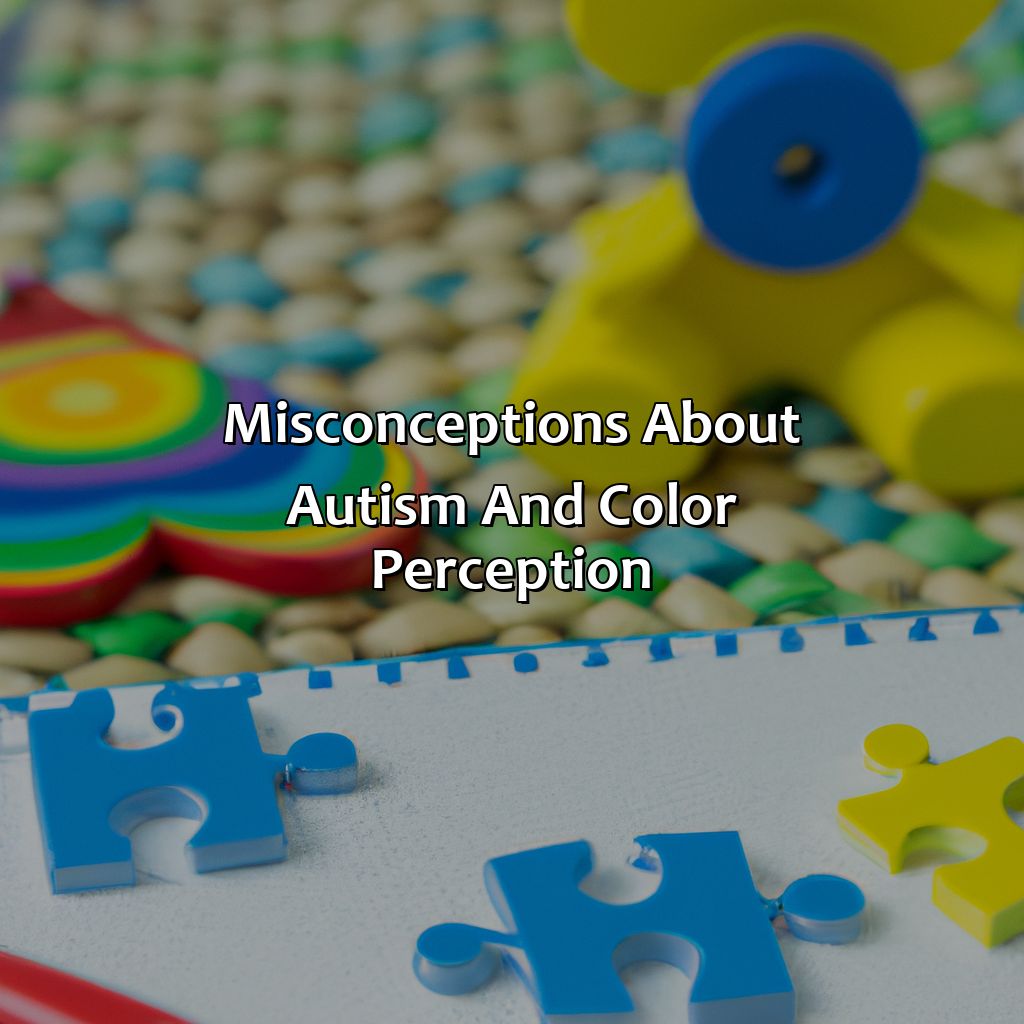
Photo Credits: colorscombo.com by Billy Williams
This section is about ‘Misconceptions about Autism and Color Perception’. It has two sub-sections: ‘Common myths about autism and color perception’ and ‘Addressing and correcting misinformation’.
Misdirected ideas about autism and color sight can cause false information. We can help understand autism and color perception better by looking at these myths and sorting out the truth.
- ‘Common myths about autism and color perception’
- ‘Addressing and correcting misinformation’
Common myths about autism and color perception
False assumptions regarding the color perception of individuals with autism spectrum disorder are prevalent in society. It is commonly believed that individuals with autism cannot perceive colors or have a lesser comprehension of colors than others. These notions lead to misunderstandings and discrimination against people diagnosed with autism.
One other popular myth is that individuals with autism only prefer muted colors and avoid bright, vivid hues. However, this notion varies among different people diagnosed with autism, as it depends upon personal preferences and sensory processing differences. Some may love bright colors, while others may find them overwhelming or distressing.
Furthermore, there is no scientific evidence to support the idea that color perception in people with autism differs significantly from those without ASD. In fact, recent research suggests that individuals on the autism spectrum perceive colors similarly to neurotypical individuals but may react more strongly to certain color schemes because of their heightened sensory sensitivity.
It is essential to understand these myths about color perception to prevent further marginalization of individuals on the spectrum. By educating ourselves and spreading awareness about these misconceptions, we can create a better understanding of autistic people’s needs and preferences.
True Fact: Research conducted by Harvard Medical School found that children diagnosed with autism tend to excel at visual tasks involving pattern recognition or detailed observation compared to their non-autistic peers.
Time to set the record straight: addressing and correcting the misinformation surrounding autism and color perception.
Addressing and correcting misinformation
To rectify misconceptions and misbeliefs about autism and color perception, misinformation needs to be addressed and corrected. Professionals can educate society by providing accurate information on autism spectrum disorders and how it affects individuals’ color perception. Misinformation about autism’s impact on color perception may lead to unfounded beliefs that are harmful to people with autism. Addressing false beliefs can prevent unnecessary distress or discrimination towards individuals with autism.
Correcting misinformation about autism and color perception is crucial as it improves understanding of the disorder and avoids stereotyping. When debunking myths, using factual evidence from credible sources helps dispel false statements about the condition. People can learn a great deal from professionals who provide accurate information on how certain colors affect individuals with Autism Spectrum Disorder (ASD).
It must be emphasized that common myths do exist around Autism Spectrum Disorder (ASD). For instance, claims that all people with ASD perceive colors in the same way could not be further from the truth. In reality, individuals with ASD each have their own preferences regarding color perception, just like neurotypical individuals. Therefore, addressing and correcting such misunderstandings needs to become a universal responsibility to create awareness among the general public.
In one example case study out of many possible incidents concerning spreading false or unsubstantiated rumors leading to mistreatment and group discrimination against autistic persons taking place in various Socioeconomic classes across different demography help validating this viewpoint further forwards its necessity.
Understanding color perception in individuals with autism is crucial for designing environments that promote their well-being and future research should focus on exploring this topic further.
Recap of key points
In the following paragraph, we will briefly summarize the important takeaways regarding color perception in individuals with autism.
- Color perception is influenced by sensory processing differences, cognitive processing differences, and genetic factors.
- Research findings suggest that individuals with autism may have unique color preferences and perceptions that can impact their emotional and behavioral response.
- Designing environments with specific color schemes can help create a more supportive experience for individuals on the autism spectrum.
- Lastly, it is crucial to address common misconceptions and provide accurate information on autism and color perception.
Just because individuals with autism see the world differently doesn’t mean we should overlook the importance of understanding their unique color perception.
The importance of understanding color perception in individuals with autism
Recognizing the significance of comprehending color perception in individuals with autism is crucial for catering to their sensory and cognitive processing differences. Understanding color perception will help designers create environments suitable for the individual’s needs, based on calming or stimulating colors. Moreover, having knowledge about preferred colors can improve emotional and behavioral responses. As every individual has diverse sensitivities, insights into their unique way of seeing color help provide personalized care.
A thorough understanding of color perception in individuals with autism is of utmost importance to ensure that their requirements are addressed without marginalization or deprivation. The ability to choose intelligently from a wide range of hues in designing an environment that caters to all sensory needs ensures they are not denied access and provides a better lifestyle. Therefore, it is essential to understand which colors they prefer to feel happy, comfortable and relaxed.
Studies suggest some autistic individuals present hyper (too much) or hypo- (too little) sensitivity towards certain colors compared to others. This difference can affect their perceptual experience due to genetic factors among other reasons that vary widely across individuals with ASD. Accordingly, understanding each individual’s unique sensory-processing profile is pertinent for functional enrichment.
Observations on patterns among autistic children have revealed interesting details concerning their use of color in conveying emotions along with precise articulation. They display distinct associations between different chromas & emotions’ intensity levels than non-autistic people do – accurate diagnosis aids specific personalized treatment directions.
Research conducted by Holm et al (2010) indicates that high-functioning autistic people possess incredible memory abilities linked with hue recall, specifically regarding the colours prevalent in routines.
Future directions for research on autism and color perception .
Advancements in technology offer future directions for research on autism and color perception. Innovations such as eye-tracking devices, virtual reality, and neuroimaging techniques could provide insightful data about sensory and emotional processing in individuals with autism. Furthermore, investigating the impact of different colors on mood, behavior, and cognitive functions of children diagnosed with autism can provide valuable information for designing intervention programs. Researching the unique experiences of autistic individuals across cultures can also help improve understanding of color perception differences.
Five Facts About What Color Is Autism:
- ✅ Autism does not have a specific color. (Source: Autism Society)
- ✅ However, blue is commonly associated with autism awareness, and the symbol for autism awareness is a puzzle piece. (Source: Autism Speaks)
- ✅ Other organizations have used different colors to represent autism, such as red, yellow, and gold. (Source: Verywell Health)
- ✅ Some individuals with autism have a preference for certain colors or have sensitivity to bright lights and certain color patterns. (Source: Autism Parenting Magazine)
- ✅ It is important to remember that individuals with autism are diverse and unique, and their experiences with color may vary. (Source: Autism Research Institute)
FAQs about What Color Is Autism
What color is autism?
Autism is not a color, it is a developmental disorder that affects communication, social interaction, and behavior.
Why do people associate a color with autism?
Some organizations have adopted the color blue as a symbol for autism awareness, but this is not universally recognized and does not represent the diversity of experiences within the autism community.
Is there a specific color that represents autism acceptance?
There is no single color that represents autism acceptance, as acceptance and understanding of autism should be demonstrated through actions rather than symbols.
Are there any colors that may be soothing for individuals with autism?
Some individuals with autism may benefit from colors that are calming or provide sensory stimulation, such as muted or pastel shades of blue, green, or purple.
Can wearing a specific color help individuals with autism?
Wearing a specific color does not have a direct impact on individuals with autism, but promoting acceptance and understanding of autism can positively impact individuals and their families.
How can we support the autism community beyond using a specific color?
We can support the autism community by promoting inclusion and accessibility, advocating for resources and services, and learning more about the experiences and perspectives of individuals with autism.
